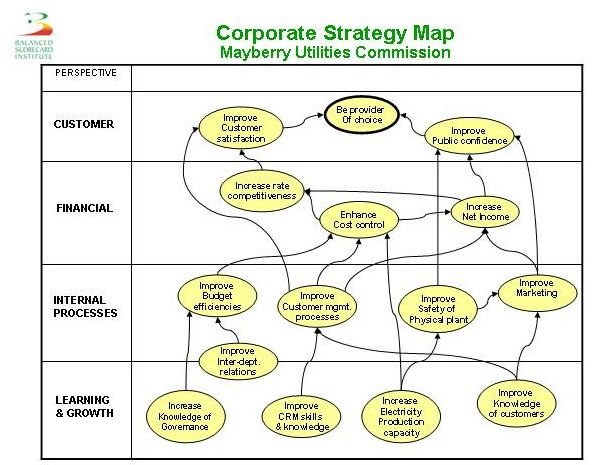Who Uses Balanced Scorecards? How Organizations Can Benefit
Getting Real Meaning From the Numbers
Companies use balanced scorecards to make an assesment of their overall performance. The tool makes such an assessment by evaluating achievement of goals in the financial, customer, learning and growth, and internal-business process factors, and by identifying key processes that could possibly drive strategic success and distribute resources among technology, people, and other capital for the best results.
The tool has four perspectives: financial, customer, internal, and innovation and learning.
- The financial perspective looks into financial viability through market share, profit ratios, revenue increase, return on investments, operating cost management, operating ratios, return on assets ratio, cash flow, sales, sales growth, return on capital Investments, share prices, return on stock investment and other similar factors.
- The customer perspective concerns itself with the views and feedback of the customer. The focus is on customer service, customer retention and satisfaction, and acceptance of new products in new markets.
- The internal perspective strives to align people with processes, and excel in whatever the organization does. Probable goals could include improvement in technology, progress in core competency knowledge, streamlining processes, establishing manufacturing standards, inventory management, reduced waste and quality improvements.
- The innovation and learning perspective aims at continuous value creation through interventions such as new product development, nonstop enhancement, HR development, product diversification, staff development and technical leadership.
Usage
Art Schneiderman, an independent consultant created the first balanced scorecard in 1987, at Analog Devices, a mid-sized semi-conductor company. However, it was Kaplan and Norton, who further developed this concept by 1992, causing it to gain widespread popularity as a tool to evaluate performance, assist strategic planning and set goals.
Initially implemented by the American Military and General Electric, today this tool finds widespread acceptance in most English-speaking western countries, Scandinavia, Middle East, Asia, and all Spanish-speaking countries. About half of the major companies in these places, and about the same percentage of all Fortune 1000 companies apply this tool. The application spreads across sectors, extending to government, health, retail, military and even non-profits.
By their very purpose and structure, balanced scorecards focus on big businesses, and as such, the number of other businesses using this tool is small across countries and sectors. Small businesses can still apply this tool as a valuable strategy map, but the costs involved make it out-of-bounds for many.
Application
The popularity of balanced scorecards across diverse sectors such as government, health, retail, military, and non-profits owes to the ability of the tool to:
- Improve alignment over departments by instilling clarity and reliable communication over goals and strategies.
- Establishing a link between corporate vision and strategy, and strategy and operations.
- Adapt easily to established standards and conventions. A 1997 study by Kurtzman finds that 64 percent of the companies who do not use this tool still measure performance similarly.
Implementation helps organizations improve operations, develop role clarity, and become agile, lean, and efficient. Much of the benefits however come during the design stage rather than the actual implementation. For this reason, organizations who use balanced scorecards, but do so by copying that of another organization without customization, falter in realizing the benefits. Successful implementation requires heavy involvement of management and operational staff to ensure suitability and compatibility of the tool to the organization.
References
- Lussier, Robert N., (2006). “Entrepreneurs use a balanced scorecard to translate strategy into performance measures”, Journal of Small Business Management, July .
- Kurtzman J (1997) “Is your company off course? Now you can find out why”, Fortune Feb 17 pp128– 30
Image Credit: Wikimedia Commons
This post is part of the series: Balanced Scorecards
Thinking about developing a balanced scorecard for your business? Learn more about these important analysis tools and find examples that you can freely download for your own personal or business use.
